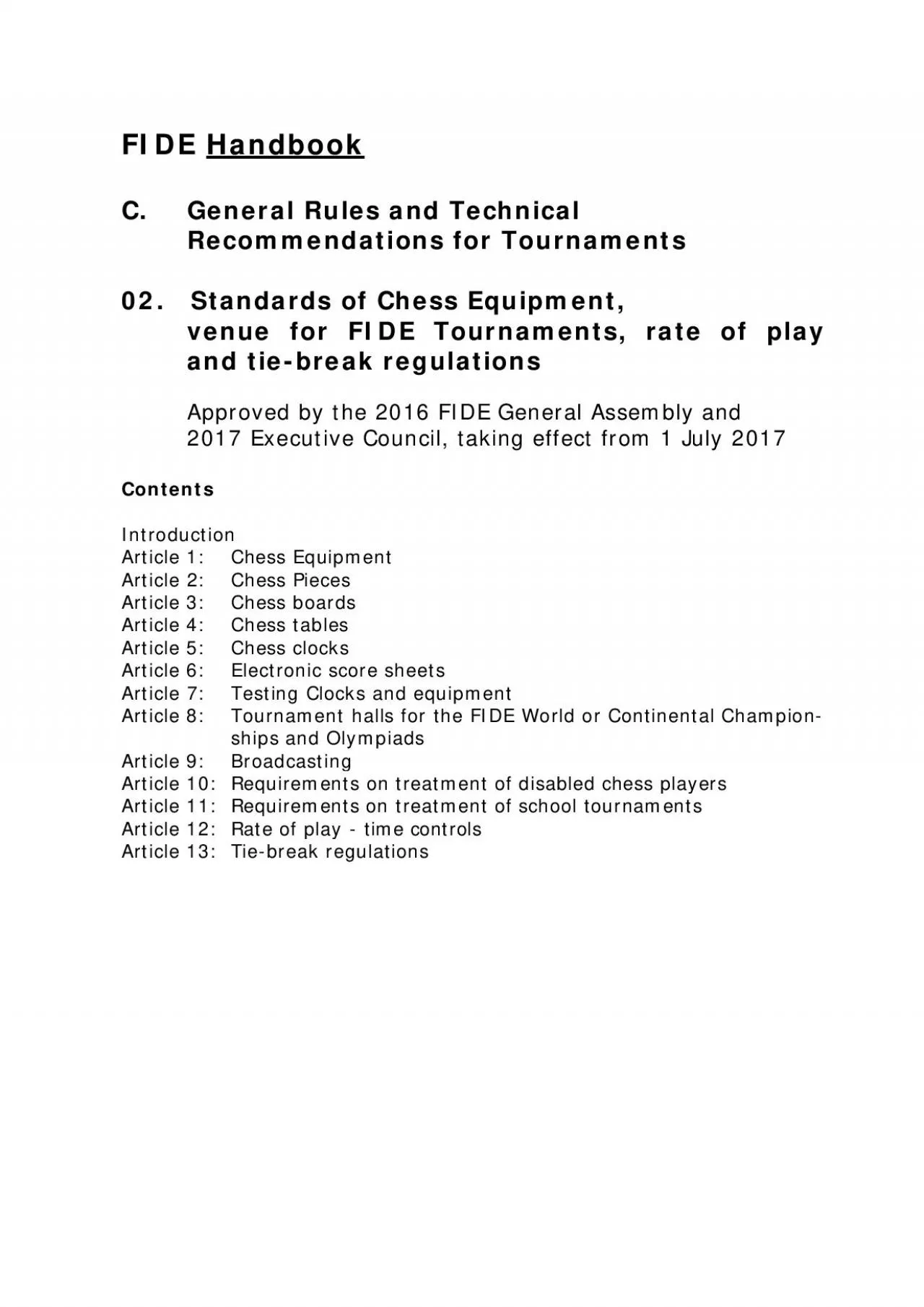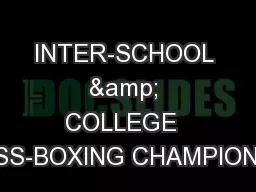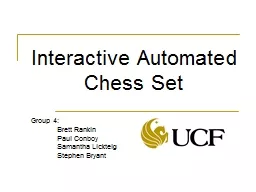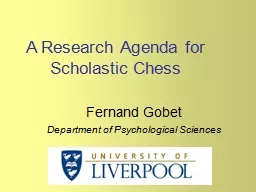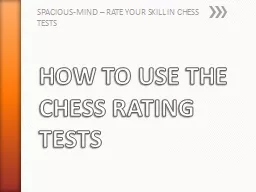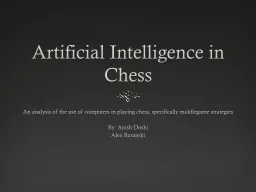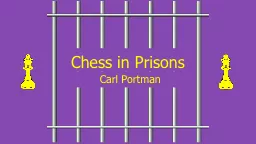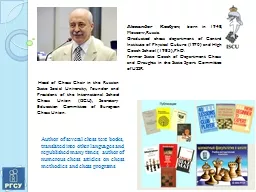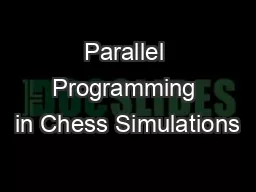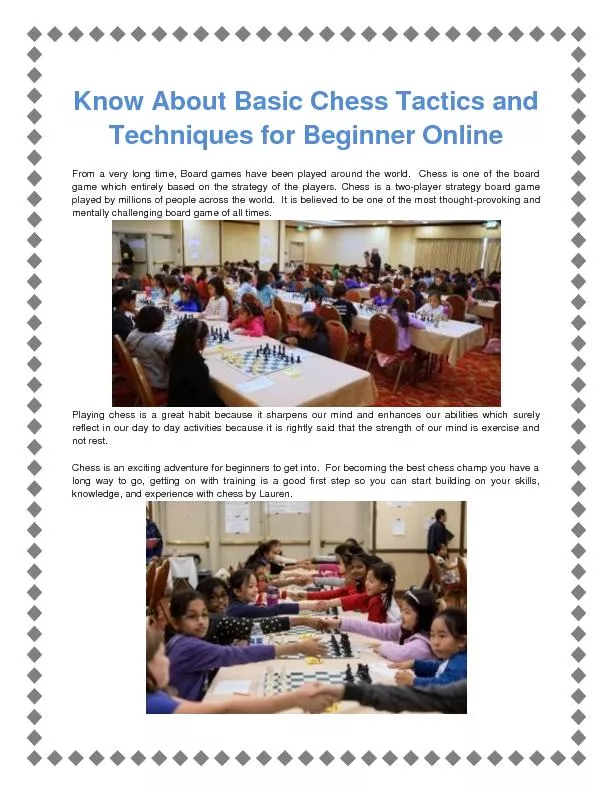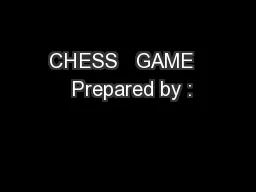PDF-This document defines the general standards for chess equipment and co
Author : ash | Published Date : 2021-01-11
Recommended for use in FIDE competitions are pieces of Staunton style The pieces should be shaped so as to be clearly distinguishable from one another In particular
Presentation Embed Code
Download Presentation
Download Presentation The PPT/PDF document "This document defines the general standa..." is the property of its rightful owner. Permission is granted to download and print the materials on this website for personal, non-commercial use only, and to display it on your personal computer provided you do not modify the materials and that you retain all copyright notices contained in the materials. By downloading content from our website, you accept the terms of this agreement.
This document defines the general standards for chess equipment and co: Transcript
Download Rules Of Document
"This document defines the general standards for chess equipment and co"The content belongs to its owner. You may download and print it for personal use, without modification, and keep all copyright notices. By downloading, you agree to these terms.
Related Documents

